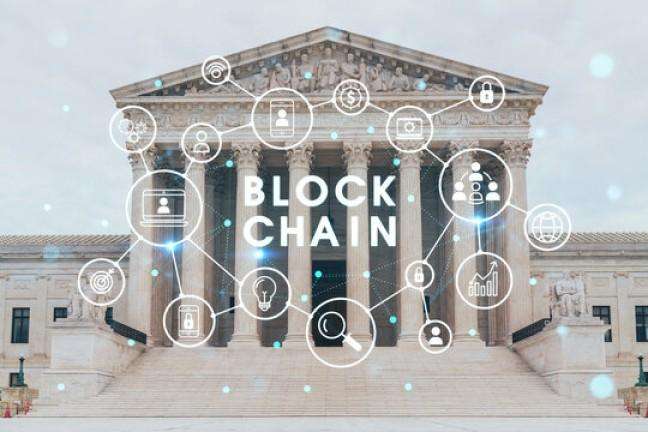In the world of technology, there are numerous ways to store, organize, and retrieve data. One of the most innovative methods of handling information in recent years is blockchain technology. Traditionally, databases have been the go-to solution for managing large amounts of data, but with the rise of blockchain, the landscape is starting to change. In this article, I will explore the advantages of blockchain over traditional databases, providing a detailed comparison to help you understand why blockchain might be a better choice for certain use cases.
To begin with, it’s important to understand what blockchain and traditional databases are, and how they differ in structure, security, and functionality. At their core, both systems aim to store data in an organized way that makes it easy to access, update, and manage. However, their approach and underlying technologies differ significantly.
Table of Contents
Understanding Traditional Databases
A traditional database is typically a centralized system where all data is stored in tables, columns, and rows. These databases can either be relational or non-relational. Relational databases, such as MySQL, PostgreSQL, and Oracle, use a structured query language (SQL) to manage and manipulate data. On the other hand, non-relational databases, like MongoDB and Cassandra, store data in a more flexible format without strict schema requirements.
Databases are controlled by a central authority, such as a database administrator (DBA), who has full access to the data. The authority is responsible for maintaining the integrity, security, and accessibility of the data. While this model works well in many cases, it has certain limitations that blockchain addresses.
Understanding Blockchain Technology
Blockchain is a decentralized, distributed ledger that records transactions across multiple computers. Each “block” in the chain contains a list of transactions, and once a block is added to the chain, it cannot be altered. This makes blockchain inherently tamper-resistant. Unlike traditional databases, blockchain operates without a central authority, and data is stored in a peer-to-peer network, making it transparent and immutable.
The key advantages of blockchain over traditional databases come from these unique characteristics: decentralization, immutability, and transparency.
1. Decentralization vs. Centralization
One of the most significant advantages of blockchain over traditional databases is decentralization. In traditional databases, a central authority controls and manages the data. This centralized model can be a single point of failure. If the database server goes down or is compromised, all data may become inaccessible or tampered with. Additionally, a central authority can manipulate the data, intentionally or unintentionally, leading to trust issues.
In contrast, blockchain’s decentralized nature means there is no single point of control. Data is distributed across a network of nodes, and each node has a copy of the entire blockchain. This makes blockchain more resistant to failure and tampering. If one node goes down or is compromised, the others continue to function, ensuring the data remains secure and accessible.
Comparison Table: Centralization vs. Decentralization
| Feature | Traditional Database | Blockchain |
|---|---|---|
| Data Control | Centralized, controlled by one authority | Decentralized, distributed across multiple nodes |
| Single Point of Failure | Yes, if the central server fails | No, data is distributed across multiple nodes |
| Data Modification | Can be altered by administrators | Immutable once added to the blockchain |
2. Immutability vs. Modifiable Data
Blockchain is designed to be immutable. Once a block is added to the chain, it cannot be altered or deleted. This is achieved through the use of cryptographic hashes, which ensure that any change in the data will break the integrity of the entire block. Immutability provides a high level of security because it makes data tampering extremely difficult. If someone tries to alter the data in a block, they would have to change all subsequent blocks, which requires an immense amount of computational power.
Traditional databases, on the other hand, are not immutable. Data can be modified or deleted at any time by authorized users. While this can be beneficial for certain applications (such as updating user information), it also introduces a risk of data manipulation, either accidentally or maliciously.
Example: Data Modification Scenario
Let’s assume a traditional database stores financial transaction data. A user might make a transfer of $500 to another account. In a traditional database, this transaction could be altered by the database administrator, changing the amount or even deleting the record entirely. In a blockchain, once the transaction is recorded, it is permanent, and no one can change it.
| Scenario | Traditional Database | Blockchain |
|---|---|---|
| Ability to Alter Data | Allowed, subject to access permissions | Not allowed, once added to the blockchain |
| Risk of Data Manipulation | High, if the database is compromised | Extremely low, due to cryptographic validation |
| Example | Financial transfer data can be modified | Transaction data is permanent and immutable |
3. Transparency and Trust
Another significant advantage of blockchain over traditional databases is transparency. In a blockchain, every participant has access to the same data. This makes the system highly transparent, as all transactions are recorded on the blockchain and can be verified by anyone with access to the network. This transparency fosters trust, as all participants can see and audit the data in real-time.
In traditional databases, data is typically hidden from all but the authorized users. Access to the data is controlled by the database administrator, which can lead to trust issues. If a third party wants to verify the integrity of the data, they must rely on the central authority to provide access, which could be manipulated.
Transparency Comparison Table
| Feature | Traditional Database | Blockchain |
|---|---|---|
| Data Transparency | Limited, only accessible to authorized users | Publicly accessible to all participants in the network |
| Trust Level | Trust in central authority | Trust in the decentralized network and cryptography |
| Example | Financial institution controlling access | Anyone can verify the authenticity of a transaction |
4. Security and Data Integrity
Blockchain offers a higher level of security compared to traditional databases due to its cryptographic features. Each block in the chain is secured using a cryptographic hash, making it extremely difficult to tamper with the data. Additionally, blockchain uses consensus mechanisms, such as proof of work or proof of stake, to validate transactions. This ensures that only legitimate transactions are added to the blockchain.
Traditional databases, while they can be secured with encryption and other security measures, are still vulnerable to attacks such as SQL injection, data breaches, and insider threats. Hackers can exploit vulnerabilities in the system or gain unauthorized access to the central server, compromising the integrity of the data.
Example: Security Breach Scenario
Consider a scenario where a hacker attempts to alter the transaction history of a financial institution. In a traditional database, if they gain access to the database, they could modify or delete records, resulting in financial fraud. In a blockchain, the hacker would need to alter every subsequent block, which is practically impossible due to the computational power required.
| Scenario | Traditional Database | Blockchain |
|---|---|---|
| Security Threat | Vulnerable to SQL injection, insider attacks | Highly secure with cryptographic hashing and consensus validation |
| Ability to Hack | Possible with database access | Extremely difficult without control over the majority of the network |
| Example | Hacker altering transaction records | Hacker attempting to alter a block would fail due to cryptographic validation |
5. Cost Efficiency
While blockchain is often perceived as a costly technology to implement due to its complexity and the need for consensus algorithms, it can lead to cost savings in the long run. By removing the need for intermediaries (such as banks or other third-party validators), blockchain reduces transaction fees. Additionally, blockchain eliminates the need for a central authority to maintain and secure the database, reducing administrative costs.
Traditional databases, especially those used in large enterprises, often require significant infrastructure investments, maintenance costs, and administrative overhead. Moreover, the need for multiple servers, database administrators, and security measures can add up, making traditional databases costly to maintain.
Cost Comparison Table
| Feature | Traditional Database | Blockchain |
|---|---|---|
| Infrastructure Costs | High, due to centralized servers and maintenance | Low, as data is decentralized across nodes |
| Maintenance Costs | High, as central authority and administrators are needed | Low, due to automated validation processes |
| Transaction Fees | High, with intermediaries involved | Low, with peer-to-peer transactions |
Conclusion
In conclusion, blockchain offers several advantages over traditional databases, particularly in terms of decentralization, immutability, transparency, security, and cost efficiency. While traditional databases remain an essential tool in many industries, blockchain is a powerful alternative for scenarios where data integrity, security, and transparency are critical. It is important to consider the specific needs of your project or business when deciding whether to use a traditional database or blockchain, as each technology has its strengths and weaknesses.
By understanding these differences and the benefits that blockchain brings to the table, you can make more informed decisions about which technology is best suited to your needs. Whether it’s for financial transactions, supply chain management, or secure record-keeping, blockchain has the potential to revolutionize the way we think about data storage and management.





